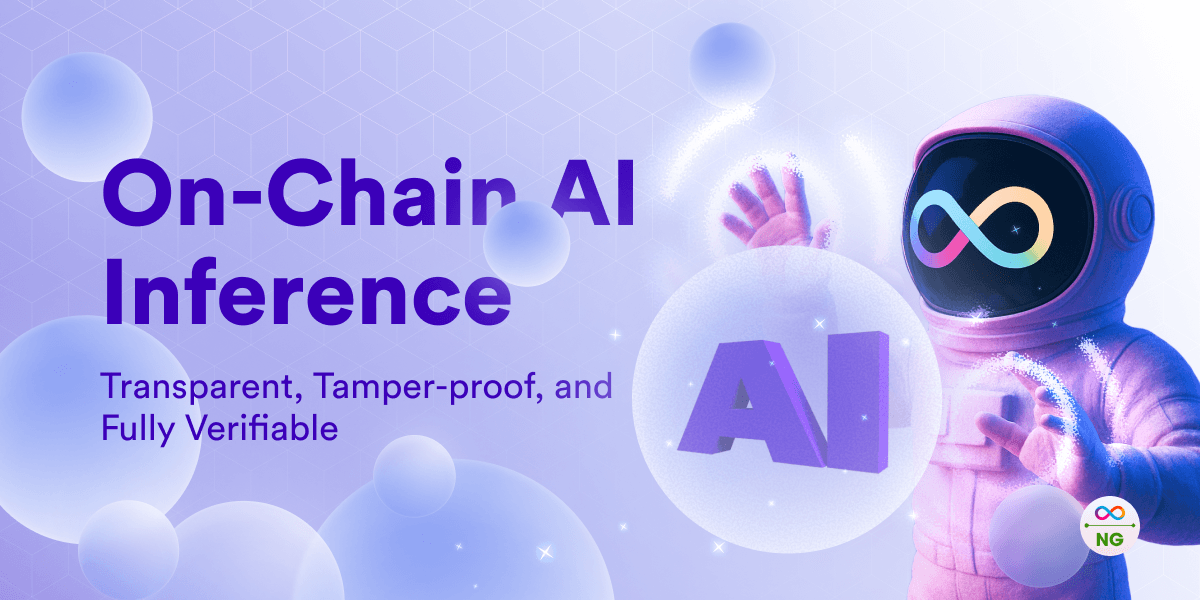
Artificial intelligence isn’t limited to research labs or cloud platforms anymore. You interact with it more than you realise, through chatbots, recommendation engines, and digital tools that streamline your day. As this technology continues to grow, so does the need for greater openness and decentralization. Who really controls these models? Who decides how they function?
These questions are shaping a new wave in technology: fully on-chain AI inference, where intelligent models are executed directly within blockchain-based smart contracts.
The Internet Computer Protocol (ICP) is leading this evolution, a blockchain built to run complex software directly on-chain. Unlike conventional systems that depend on external APIs or cloud services, ICP creates a decentralized environment where AI can function independently, without relying on third parties.
On-Chain Inference: A New Standard for Trust
Inference is the moment AI becomes useful, the process of applying trained models to real-world input. Traditionally, inference happens off-chain, in cloud environments owned by private companies. The result? Limited transparency, weak auditability, and full reliance on centralized control.
On-chain inference, however, embeds AI directly into smart contracts. This makes its operations transparent, tamper-proof, and fully verifiable. It enables decentralized applications where even the intelligence layer operates under the same rules of openness and trustlessness as the underlying blockchain.
Why ICP Makes On-Chain AI Possible
Many blockchains simply aren’t built to handle AI workloads. ICP is different. Its smart contracts—called canisters—run WebAssembly code, support large memory (up to 4GB per canister), and maintain persistent state. This combination enables not just storage but also real-time execution of AI models.
ICP also allows direct HTTP requests from canisters, removing the need for third-party oracles to fetch external data. This gives on-chain AI real-world awareness, critical for use cases like live market analysis, recommendation systems, and autonomous agents.
Looking ahead, ICP is integrating support for SIMD instructions and GPU acceleration within its compute environment, opening doors to even more advanced AI capabilities.
A Breakthrough Moment: GPT-2 On-Chain
In a landmark experiment, the DecideAI team deployed GPT-2 fully on-chain using ICP. The language model, which typically requires substantial compute power, was successfully loaded into a canister and made available through the blockchain. Users could prompt the model and receive responses, entirely without relying on cloud services.
This was the first example of a large-scale AI model performing inference within a smart contract. It showed that intelligent, interactive services can operate independently of any centralized infrastructure.
Expanding Use Cases: From Identity to Agents
ICP’s architecture enables a range of AI-powered applications beyond language models.
- Decentralized facial recognition: Developers have embedded image-processing models in canisters that analyse visual input directly on-chain. This lays the groundwork for privacy-respecting identity systems and secure biometric authentication.
- Autonomous agents: On-chain bots can now act on behalf of users or DAOs, making governance proposals, filtering information, or even facilitating customer support, entirely from within a blockchain environment.
Because these agents are on-chain, their logic is auditable, their behaviour predictable, and their upgrades visible to the community.
How Developers Build On-Chain AI on ICP
The process begins with off-chain model training using standard frameworks like PyTorch or TensorFlow. Once the model is trained, its weights are serialized and uploaded to an ICP canister.
A lightweight inference engine is built into the canister, processing user inputs to generate responses. Since canisters support persistent storage, models can evolve or store session-specific data—something most other chains can’t do.
This entire pipeline, from input to response, happens within a decentralized, verifiable environment.
On-chain AI solves key challenges in modern digital systems through:
- Transparency: Smart contracts make AI logic visible and auditable.
- Privacy: User data remains within the blockchain, not funnelled through centralized APIs.
- Access: Anyone with internet access can interact with AI services without being tied to proprietary platforms.
- Autonomy: AI becomes a public utility, not a corporate asset.
In effect, ICP transforms AI from a closed service into a programmable, decentralized infrastructure.
While current implementations are focused on inference, future advancements could enable on-chain model training, federated learning, and decentralized fine-tuning. ICP’s roadmap suggests steady progress toward these goals, with hardware-accelerated compute on the horizon.
Scalability remains a challenge; large models like GPT-4 still exceed current on-chain limits, but these are technical barriers, not conceptual ones. The foundation has already been laid.
Conclusion
On-chain AI isn’t just a technical milestone on ICP, it’s a shift in how intelligence is governed. ICP redefines what trust and autonomy mean in AI-powered systems by enabling models to operate transparently within decentralized infrastructure.
As developers continue to explore this frontier, ICP is proving that AI can belong to everyone, not just the few who control the clouds.